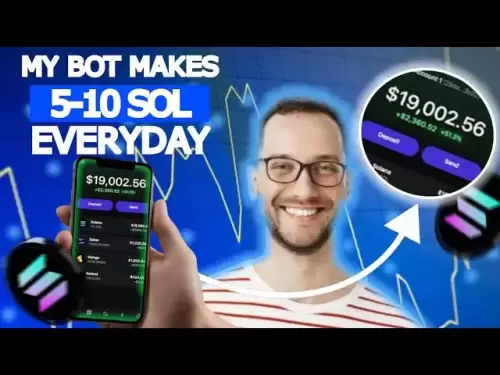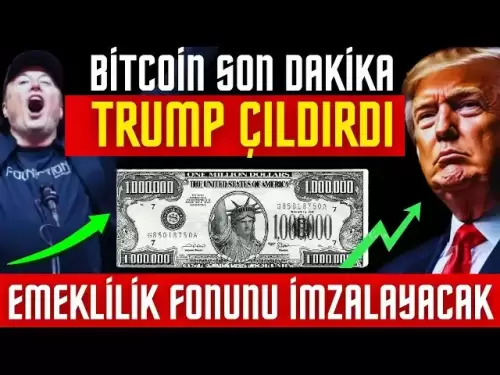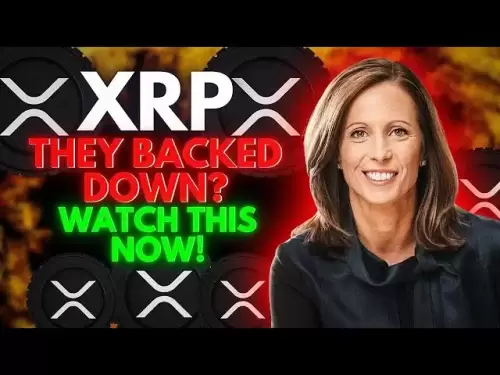-
 Bitcoin
Bitcoin $117500
2.15% -
 Ethereum
Ethereum $3911
6.19% -
 XRP
XRP $3.316
10.79% -
 Tether USDt
Tether USDt $1.000
0.01% -
 BNB
BNB $787.2
2.24% -
 Solana
Solana $175.2
4.15% -
 USDC
USDC $0.9999
0.00% -
 Dogecoin
Dogecoin $0.2225
8.40% -
 TRON
TRON $0.3383
0.28% -
 Cardano
Cardano $0.7868
6.02% -
 Stellar
Stellar $0.4382
9.34% -
 Hyperliquid
Hyperliquid $40.92
7.56% -
 Sui
Sui $3.764
7.63% -
 Chainlink
Chainlink $18.48
10.66% -
 Bitcoin Cash
Bitcoin Cash $582.1
1.88% -
 Hedera
Hedera $0.2601
6.30% -
 Avalanche
Avalanche $23.33
4.94% -
 Ethena USDe
Ethena USDe $1.001
0.02% -
 Litecoin
Litecoin $122.3
2.04% -
 UNUS SED LEO
UNUS SED LEO $8.969
-0.27% -
 Toncoin
Toncoin $3.339
0.86% -
 Shiba Inu
Shiba Inu $0.00001287
4.30% -
 Uniswap
Uniswap $10.43
7.38% -
 Polkadot
Polkadot $3.861
5.08% -
 Dai
Dai $1.000
0.02% -
 Bitget Token
Bitget Token $4.513
3.41% -
 Monero
Monero $267.7
-6.18% -
 Cronos
Cronos $0.1499
4.14% -
 Pepe
Pepe $0.00001110
5.15% -
 Aave
Aave $284.9
8.28%
Can SOL buy after the W bottom pattern is confirmed?
Consider buying Solana (SOL) after confirming a W bottom pattern, but analyze market conditions and use risk management strategies like stop-loss orders.
Apr 19, 2025 at 05:01 am
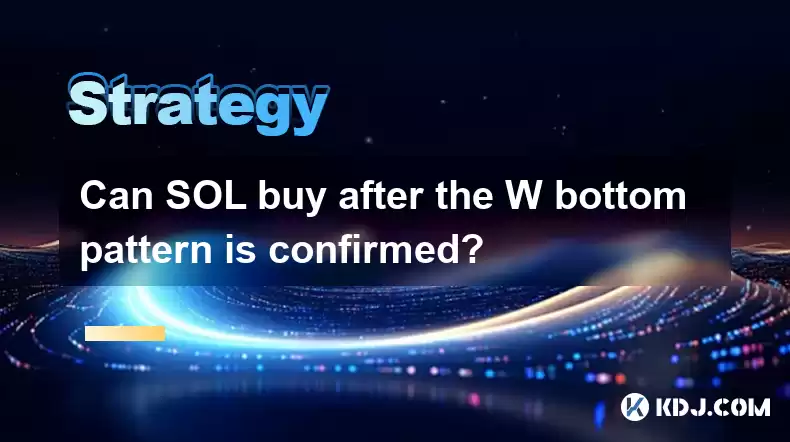
The W bottom pattern, also known as a double bottom, is a popular technical analysis pattern in the cryptocurrency market that traders often look for as a potential signal for a bullish reversal. In this article, we will explore whether it is advisable to buy Solana (SOL) after confirming a W bottom pattern, and what considerations traders should keep in mind.
Understanding the W Bottom Pattern
The W bottom pattern is characterized by the price of an asset forming two distinct lows at roughly the same level, with a peak in between. This pattern suggests that the asset has tested a support level twice and failed to break below it, indicating a potential shift from a bearish to a bullish trend. For Solana (SOL), identifying this pattern involves closely monitoring price charts and looking for these specific formations.
Confirming the W Bottom Pattern on SOL
To confirm a W bottom pattern on SOL, traders should follow these steps:
- Identify the first low: Look for a significant low point on the SOL price chart.
- Identify the peak: After the first low, observe the price as it rises to form a peak.
- Identify the second low: The price should then drop again to form a second low at a similar level to the first low.
- Confirm the breakout: The pattern is confirmed when the price breaks above the peak formed between the two lows.
It's crucial to use technical indicators such as moving averages, volume, and the Relative Strength Index (RSI) to validate the pattern. For instance, an increase in trading volume during the breakout and a bullish divergence on the RSI can provide additional confirmation.
Analyzing SOL's Market Conditions
Before deciding to buy SOL after confirming a W bottom pattern, it's essential to analyze the broader market conditions. Factors such as the overall sentiment in the cryptocurrency market, regulatory news affecting Solana, and the performance of other major cryptocurrencies can impact SOL's price movement. A bullish market environment can enhance the reliability of the W bottom pattern, whereas a bearish market might undermine it.
Risk Management Strategies
When considering a purchase of SOL following a W bottom pattern, implementing effective risk management strategies is vital. Here are some steps to consider:
- Set stop-loss orders: Place a stop-loss order just below the second low of the W bottom pattern to limit potential losses if the price unexpectedly drops.
- Determine position size: Calculate the appropriate position size based on your risk tolerance and the distance between your entry point and stop-loss level.
- Monitor market conditions: Continuously monitor market conditions and be prepared to adjust your strategy if the situation changes.
Technical Analysis Tools for SOL
In addition to the W bottom pattern, traders can use various technical analysis tools to enhance their decision-making process. Some useful tools include:
- Moving Averages: Use moving averages to identify trends and potential support and resistance levels.
- Fibonacci Retracement: Apply Fibonacci retracement levels to identify potential reversal points.
- MACD (Moving Average Convergence Divergence): Utilize the MACD to confirm trend changes and momentum shifts.
These tools can provide additional insights into SOL's price movements and help traders make more informed decisions.
Psychological Factors in Trading SOL
Trading cryptocurrencies like SOL involves not only technical analysis but also an understanding of psychological factors. Emotions such as fear and greed can significantly influence trading decisions. It's important for traders to maintain discipline and adhere to their trading plan, even after confirming a W bottom pattern. Staying rational and avoiding impulsive decisions can help maximize the potential benefits of trading SOL.
Practical Example of Buying SOL After a W Bottom Pattern
Let's consider a hypothetical scenario where SOL forms a W bottom pattern. Here's how a trader might proceed:
- Identify the pattern: The trader observes SOL's price chart and identifies two lows at around $100, with a peak at $120 in between.
- Confirm the breakout: The price breaks above the $120 peak, confirming the W bottom pattern.
- Enter the trade: The trader decides to buy SOL at the breakout level of $121.
- Set stop-loss: The trader sets a stop-loss order at $99, just below the second low.
- Monitor and adjust: The trader continuously monitors SOL's price and market conditions, ready to adjust the stop-loss or take profits as needed.
This example illustrates the process of buying SOL after confirming a W bottom pattern and highlights the importance of careful planning and execution.
Frequently Asked Questions
Q: How long should I wait for the confirmation of a W bottom pattern on SOL?
A: The time it takes to confirm a W bottom pattern on SOL can vary depending on market conditions. It's important to be patient and wait for a clear breakout above the peak between the two lows, which could take anywhere from a few days to several weeks.
Q: Can other technical indicators be used to confirm a W bottom pattern on SOL?
A: Yes, other technical indicators such as the RSI, MACD, and volume can be used to confirm a W bottom pattern on SOL. A bullish divergence on the RSI, a positive crossover on the MACD, and an increase in volume during the breakout can provide additional confirmation.
Q: Is it necessary to use a stop-loss order when buying SOL after a W bottom pattern?
A: Yes, using a stop-loss order is highly recommended when buying SOL after a W bottom pattern. It helps manage risk by limiting potential losses if the price unexpectedly drops below the second low of the pattern.
Q: Can the W bottom pattern be used on other cryptocurrencies besides SOL?
A: Yes, the W bottom pattern can be applied to other cryptocurrencies as well. Traders can use the same steps to identify and confirm the pattern on different assets, adapting their strategies based on the specific market conditions of each cryptocurrency.
Disclaimer:info@kdj.com
The information provided is not trading advice. kdj.com does not assume any responsibility for any investments made based on the information provided in this article. Cryptocurrencies are highly volatile and it is highly recommended that you invest with caution after thorough research!
If you believe that the content used on this website infringes your copyright, please contact us immediately (info@kdj.com) and we will delete it promptly.
- Tron's Sell-Off Spurs Altcoin Shift: What's Next for TRX?
- 2025-08-08 08:30:12
- RUVI Presale: Is the Growth Potential Real?
- 2025-08-08 09:10:12
- Sleep Token's US Takeover: Thornhill Rides the 'Even In Arcadia' Wave
- 2025-08-08 08:30:12
- FTT Token's Wild Ride: Creditor Repayments vs. Market Drop - A New Yorker's Take
- 2025-08-08 07:10:12
- Floki Crypto Price Prediction: Riding the Robinhood Rocket or Just a Meme?
- 2025-08-08 07:15:12
- EigenLayer, Restaking, and Ethereum: Navigating the Hype and the Hazards
- 2025-08-08 06:30:12
Related knowledge
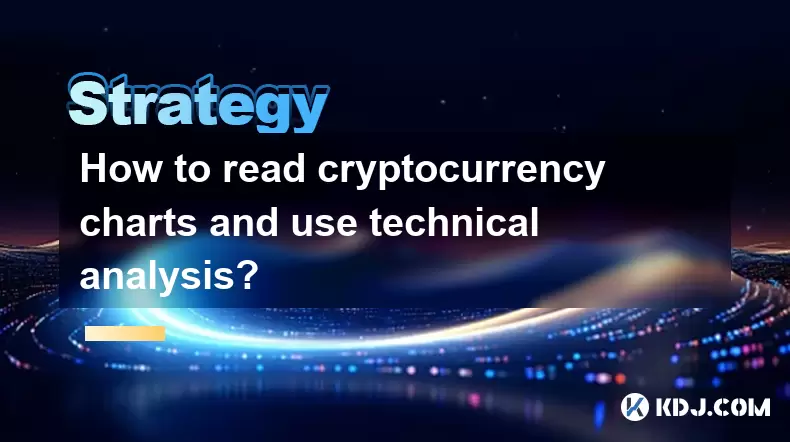
How to read cryptocurrency charts and use technical analysis?
Aug 08,2025 at 11:08am
Understanding the Basics of Cryptocurrency ChartsCryptocurrency charts are graphical representations of price movements over time. These charts are es...

How to avoid common crypto investment mistakes?
Jul 13,2025 at 01:35am
Understanding the Risks of Crypto InvestmentInvesting in cryptocurrency can be highly rewarding, but it also comes with significant risks. One of the ...

What is a long-short crypto strategy?
Jul 15,2025 at 10:56am
Understanding the Basics of a Long-Short Crypto StrategyA long-short crypto strategy is an investment approach where traders simultaneously take long ...

What is a long-short crypto strategy?
Jul 11,2025 at 01:28pm
Understanding the Basics of Long-Short Crypto StrategyA long-short crypto strategy is an investment approach where traders take both long and short po...

How to use the RSI indicator for crypto?
Jul 12,2025 at 03:56pm
Understanding the RSI Indicator in Cryptocurrency TradingThe Relative Strength Index (RSI) is a momentum oscillator used to measure the speed and chan...

Is copy trading a good strategy for crypto beginners?
Jul 12,2025 at 08:28am
Understanding Copy Trading in the Cryptocurrency MarketCopy trading is a strategy where novice traders replicate the trades of experienced investors a...

How to read cryptocurrency charts and use technical analysis?
Aug 08,2025 at 11:08am
Understanding the Basics of Cryptocurrency ChartsCryptocurrency charts are graphical representations of price movements over time. These charts are es...

How to avoid common crypto investment mistakes?
Jul 13,2025 at 01:35am
Understanding the Risks of Crypto InvestmentInvesting in cryptocurrency can be highly rewarding, but it also comes with significant risks. One of the ...

What is a long-short crypto strategy?
Jul 15,2025 at 10:56am
Understanding the Basics of a Long-Short Crypto StrategyA long-short crypto strategy is an investment approach where traders simultaneously take long ...

What is a long-short crypto strategy?
Jul 11,2025 at 01:28pm
Understanding the Basics of Long-Short Crypto StrategyA long-short crypto strategy is an investment approach where traders take both long and short po...

How to use the RSI indicator for crypto?
Jul 12,2025 at 03:56pm
Understanding the RSI Indicator in Cryptocurrency TradingThe Relative Strength Index (RSI) is a momentum oscillator used to measure the speed and chan...

Is copy trading a good strategy for crypto beginners?
Jul 12,2025 at 08:28am
Understanding Copy Trading in the Cryptocurrency MarketCopy trading is a strategy where novice traders replicate the trades of experienced investors a...
See all articles























